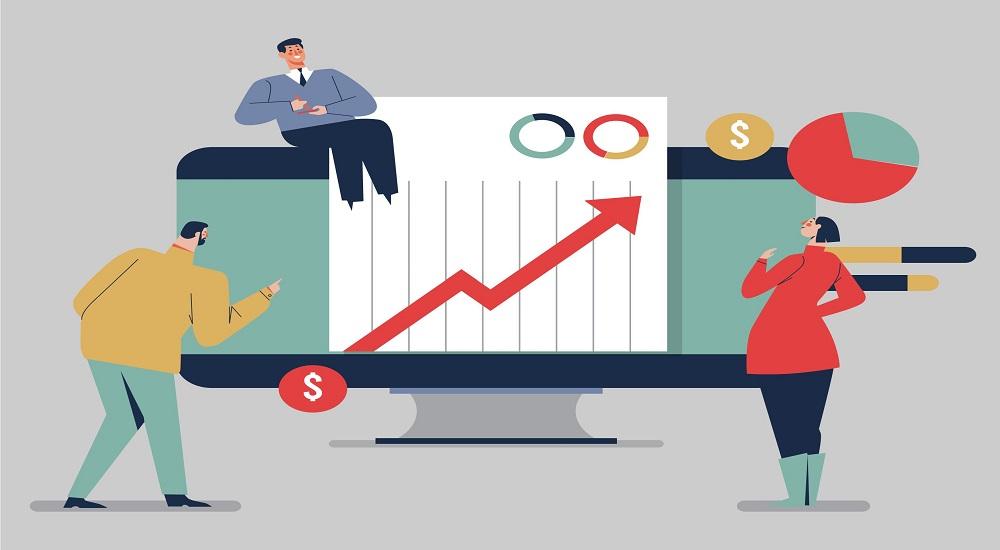Decoding Demand Forecasting Factors: Key Drivers for Business Success

Introduction
In the dynamic world of business, accurate demand forecasting is a game-changer. Understanding and decoding the factors that influence demand forecasting can significantly impact a company's success. This article delves into the critical drivers that play a pivotal role in demand forecasting for businesses. By the end, you'll have the insights needed to make informed decisions and optimize your forecasting strategies.
Decoding Demand Forecasting Factors: Key Drivers for Business Success
Demand forecasting involves predicting future customer demand for products or services, enabling businesses to make well-informed decisions regarding production, inventory management, and resource allocation. Decoding the factors that contribute to demand forecasting accuracy is crucial for achieving sustainable growth and competitive advantage. Let's explore these key drivers in detail:
Historical Sales Data Analysis
Analyzing historical sales data is the foundation of demand forecasting. Businesses must examine past trends, seasonal patterns, and historical demand fluctuations to identify meaningful patterns and insights. Leveraging advanced analytics tools and methodologies can help organizations uncover hidden patterns that impact future demand.
Market Research and Customer Insights
Understanding your target market and customers is paramount to effective demand forecasting. Conducting market research and gathering customer insights enables you to identify evolving preferences, demands, and market trends. By incorporating this data into your forecasting models, you can accurately predict demand shifts and tailor your offerings accordingly.
Economic Indicators and External Factors
External factors, such as changes in the economy, industry trends, or geopolitical events, can significantly impact demand. Monitoring and analyzing these indicators are essential for businesses to anticipate and respond to potential fluctuations in demand.
Seasonality and Weather Patterns
Certain products or services experience seasonal demand variations influenced by weather patterns, holidays, or cultural events. Deciphering these seasonal patterns allows businesses to optimize production and inventory management for maximum efficiency.
Competitor Analysis
Staying ahead of the competition requires understanding your competitors' strategies and market positioning. Conducting a thorough competitor analysis helps identify potential threats and opportunities, giving your business a competitive edge.
Technological Advancements
Embracing technological advancements in demand forecasting tools and methodologies can significantly enhance accuracy and efficiency. AI-driven forecasting algorithms and predictive analytics can deliver actionable insights and minimize forecasting errors.
Supply Chain Optimization
Efficient supply chain management plays a critical role in meeting demand while minimizing inventory costs. Integrating demand forecasting with supply chain optimization ensures smooth operations and enhances customer satisfaction.
Pricing and Promotion Strategies
Price changes and promotional activities can have a direct impact on demand. Businesses must align pricing and promotional strategies with demand forecasts to achieve optimal revenue generation.
Sales and Marketing Alignment
Effective collaboration between sales and marketing teams ensures that demand forecasting is aligned with the business's overall growth objectives. Regular communication and data sharing facilitates a holistic approach to forecasting.
Inventory Management Techniques
Accurate demand forecasting enables businesses to maintain optimal inventory levels, reducing excess inventory costs and stockouts. Implementing inventory management techniques based on forecasting results streamlines operations.
Data-driven Decision Making
Relying on data-driven insights rather than intuition or guesswork improves the precision of demand forecasting. Combining historical data, market research, and advanced analytics empowers businesses to make informed decisions.
Forecasting Accuracy Metrics
Establishing forecasting accuracy metrics helps assess the reliability of your forecasting models. Regularly tracking and evaluating these metrics allows businesses to refine their forecasting methodologies and improve accuracy over time.
Agile Forecasting Practices
The business landscape is ever-changing, and demand forecasting must be agile to adapt to evolving circumstances. Adopting flexible forecasting practices enables businesses to respond swiftly to unforeseen challenges and opportunities.
Collaboration Across Departments
Demand forecasting is a cross-functional process that requires collaboration between various departments, including sales, marketing, finance, and operations. Open communication and cooperation foster a holistic understanding of demand drivers.
Risk Assessment and Mitigation
Risk assessment is integral to demand forecasting. Identifying potential risks, such as supply chain disruptions or changes in customer behavior, allows businesses to develop mitigation strategies proactively.
Forecasting for New Product Launches
Launching new products requires accurate demand forecasting to ensure successful market entry. Combining market research with forecasting techniques helps businesses anticipate demand for new offerings.
Long-Term vs. Short-Term Forecasting
Businesses must balance long-term strategic planning with short-term tactical forecasting. Aligning both perspectives ensures a comprehensive approach to demand forecasting.
Machine Learning in Demand Forecasting
Machine learning algorithms offer advanced predictive capabilities, enabling businesses to forecast demand more accurately and efficiently than traditional methods.
Global Market Trends and Influences
Businesses operating in global markets must consider geopolitical, economic, and cultural factors that impact demand on an international scale.
Forecasting for Seasonal Industries
Industries with significant seasonal variations require specialized forecasting techniques to manage inventory and resources effectively.
Demand Forecasting for E-commerce Businesses
E-commerce companies face unique challenges in demand forecasting, requiring tailored strategies and tools to handle fluctuating demand patterns.
The Role of Big Data in Demand Forecasting
Leveraging big data analytics allows businesses to gain deeper insights into demand drivers and refine forecasting accuracy.
Ethical and Sustainable Demand Forecasting
Ethical and sustainable business practices can influence consumer behavior, requiring businesses to incorporate these values into demand forecasting.
Regulatory and Compliance Considerations
Industries subject to regulations must factor in compliance requirements when forecasting demand.
Forecasting in Crisis Situations
Navigating demand forecasting during crises, such as pandemics or natural disasters, demands adaptive and responsive approaches.
Conclusion
Decoding demand forecasting factors is a vital step toward achieving business success. By utilizing historical data, market research, technological advancements, and cross-functional collaboration, businesses can optimize demand forecasting accuracy and gain a competitive edge. Embrace the dynamic nature of demand forecasting, and with agile practices and data-driven decision-making, your business can thrive even in challenging times.
- Art
- Causes
- Crafts
- Dance
- Drinks
- Film
- Fitness
- Food
- Jocuri
- Gardening
- Health
- Home
- Literature
- Music
- Networking
- Alte
- Party
- Religion
- Shopping
- Sports
- Theater
- Wellness
- IT, Cloud, Software and Technology


